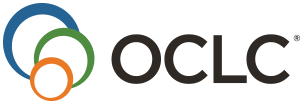Diseño de escenarios virtuales para problemas de optimización a través de geometría dinámica
DOI:
https://doi.org/10.22335/rlct.v10i2.571Palabras clave:
escenarios virtuales, geometría dinámica, problemas de optimización, registros de representaciónResumen
El presente artículo tiene el objetivo de analizar la influencia del uso de tecnologías digitales, particularmente, de software de geometría dinámica, acompañado de una didáctica en la concepción y solución de problemas aplicados, en un enfoque de enseñanza activa, en temas de optimización. La metodología siguió un enfoque cualitativo, se desarrolló a partir de taller con profesores, en el cual se resolvieron problemas en el contexto de máximos y mínimos de forma analítica y dinámica mediante el software geogebra. Resultados señalan la necesidad de implementar secuencias didácticas que guíen al a la concepción de optimización, la herramienta motiva la fase de enseñanza al permitir la simulación, modifica heurísticas y formas de solucionar un problema. Conclusión: la tecnología digital es factor motivante en la enseñanza, permite la visualización de representaciones de objetos matemáticos de manera dinámica, ayuda a la conceptualización si y solo si se apoya de secuencias didácticas.
Descargas
Referencias
Arcavi, A., y Hadas, N. (2000). Computer mediated learning: An example of an approach. International journal of computers for mathematical learning, 5(1), 25-45.
Bikner, A., Knipping C., y Presmeg, N. (Eds.). (2015). Approaches to Qualitative Research in Mathematics Education. Examples of Methodology and Methods. Dordrecht Heidelberg New York London: Springer. DOI 10.1007/978-94-017-9181-6.
Cuevas, C., y Moreno, S. (2004). Interpretaciones erróneas sobre los conceptos de máximos y mínimos en el Cálculo Diferencial. Educación Matemática. Redalyc, 16(002), 93-104.
Cuevas, C.A., y Pluvinage, F. (2003). Les projets d'action practique, elements d'une ingeniere d'ensigment des mathematiques. Annales de didactique et de sciences cognitives, 8, 273-292.
Cuevas, C.A., Rodríguez, A., y González, O. (2014). Introducción al concepto de derivada de una función real con apoyo de las tecnologías digitales. Revista el Cálculo y su enseñanza. 5, 149-156. Disponible en línea: http://mattec.matedu.cinvestav.mx/el_calculo/index.php?vol=5&index_we b=11&index_mgzne.
Cuevas, C.A., y Villamizar, F. Y. (septiembre del 2015). Propuesta didáctica para la enseñanza de las cónicas mediante un entorno digital interactivo. En: J. Alba (compilador), Memorias Congreso Internacional de Didáctica de la Matemática. Una mirada epistemológica y empírica, (pp. 203-221), Santa Marta: Colombia.
Cuevas C.A., Villamizar, F.Y., y Martínez, A. (2017). Aplicaciones de la tecnología digital para actividades didácticas que promuevan una mejor comprensión del tono como cualidad del sonido para cursos tradicionales de física en el nivel básico. Enseñanza de las Ciencias, 35(3), 129-150. https://doi.org/10.5565/rev/ensciencias.2091.
Duval, R. (1998). Registros de representación semiótica y funcionamiento cognitivo del pensamiento. En F. Hitt (trad.), Investigaciones en matemática educativa II (173-201). México: Iberoamérica.
Granville, W.A. (2017). Cálculo diferencial e integral. México: Limusa.
Hohenwarter, M. (2018). GeoGebra. Disponible en: https://www.geogebra.org/.
National Council of Teachers of Mathematics (Ed.). (2000). Principles and standards for school mathematics (Vol. 1).
Purcell, E. J., Rigdon, S. E., & Varberg, D. E. (2007). Cálculo (novena edición). México: Pearson Educación.
Santos, L. M (2003). Procesos de Transformación de Artefactos Tecnológicos en Herramientas de Resolución de Problemas Matemáticos. Boletín de la Asociación Matemática Venezolana. 10(2). 195-211.
Santos, L. M. (2010). La resolución de problemas matemáticos: fundamentos cognitivos. México: Trillas.
Serres, M. (2014). Pulgarcita. México: Fondo de Cultura Económica.
Stake, R., E. (1999). Investigación con estudio de casos (segunda edición). Madrid: Morata.
Vergel Ortega, M., Rincón Leal, O y Zafra, S. (2017). Influencia del curso precálculo en ecuaciones diferenciales y desarrollo del pensamiento variacional. En: Pedagogía y construcción de ámbitos en educación. Estados Unidos: Redipe, 660p.
Villamizar, F.Y. (2017). Problema de optimización-Caja de máximo volumen. Recuperado el 21 de septiembre del 2017. Disponible en: https://www.geogebra.org/m/vETBV5bQ
Publicado
Número
Sección
Licencia
Esta revista provee acceso libre e inmediato a su contenido (https://creativecommons.org/licenses/by-nc-nd/4.0/), bajo el principio de hacer disponible gratuitamente la investigación al público y apoyar a un mayor intercambio de conocimiento global.
































